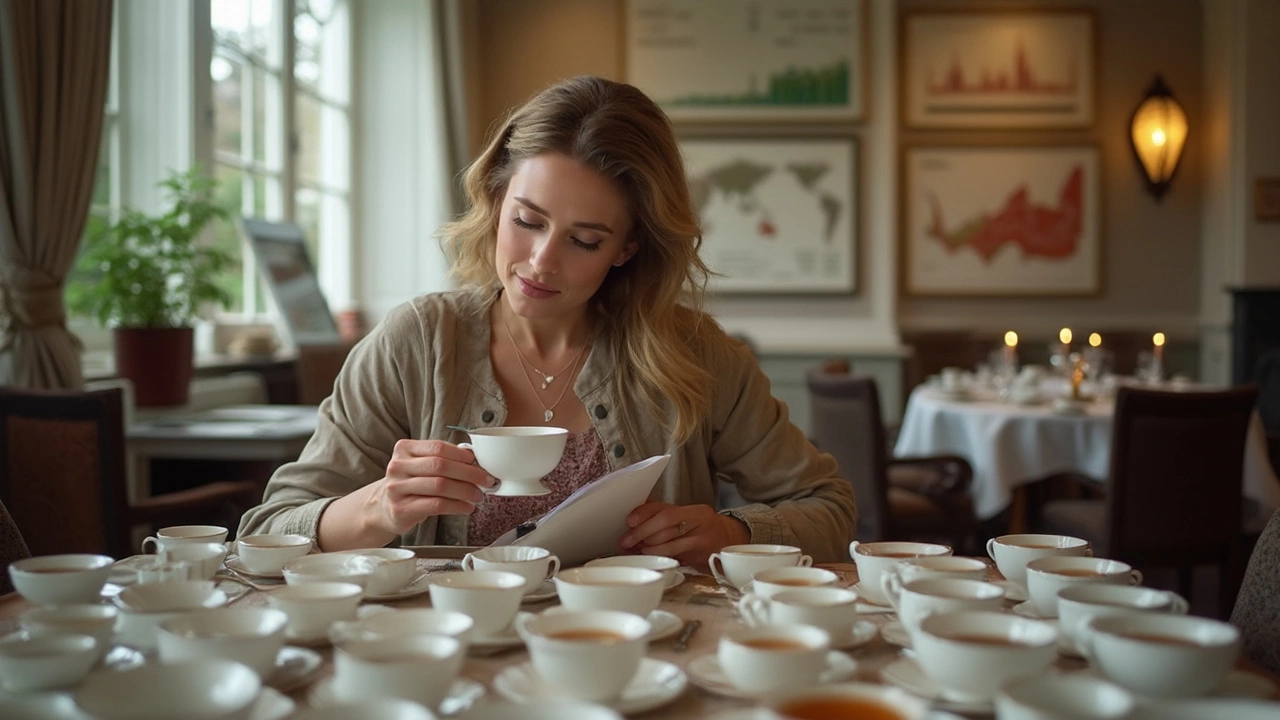Professional Tea Drinker: Tips, Terms and Everyday Practice
If you love tea enough to call yourself a professional tea drinker, you probably already know you’re not just sipping any brew. You care about the leaf, the water temperature, and the ritual. Below you’ll find the basics that separate a casual drinker from someone who can talk tea like a sommelier.
What to Call Yourself
First, get the lingo right. The most common label is teaphile – a lover of tea. If you study varieties, origins, and processing methods, you might prefer tea aficionado. For those who take it a step further and assess flavor notes like a wine critic, the term tea sommelier fits. Using the right word helps you fit in at tastings and online forums.
Tasting Like a Pro
Start with good water – ideally filtered and heated to the exact temperature the tea calls for. Green teas need about 75°C, while black teas prefer near‑boiling water. Use a proper kettle with temperature control; a few degrees can change the taste dramatically.
Measure the tea precisely. A teaspoon of loose leaf per 250 ml of water is a solid baseline, but adjust based on leaf size. Larger leaves, like oolong, need more space to unfurl, so use a bigger infuser.
When you pour, watch the color. A light amber hue often means a gentle brew, while a deep ruby suggests a stronger extraction. Take a sniff before the first sip – aromatics are a big part of the experience. Then, let the liquid coat your tongue and note the primary flavors, body, and finish. Do you taste vegetal, nutty, or a hint of citrus? jot it down; a simple notebook works better than a phone app for quick reference.
Cleaning your gear matters. Rinse teapots and infusers with hot water after each use to avoid flavor carry‑over. If you store tea, keep it in an airtight container away from light and strong odors. Proper storage preserves the delicate notes you worked hard to discover.
Pairing food can elevate a tasting. Light snacks like almonds, shortbread, or fresh fruit complement most teas without overwhelming the palate. For stronger black teas, try dark chocolate or smoked cheese; for delicate white teas, pair with mild cheese or cucumber sandwiches.
Finally, etiquette. In a formal tasting, wait for the host to signal the start, never stir the tea aggressively, and keep conversations low‑key. If you’re at a tea house, ask the staff about the brew’s origin – they’ll appreciate your interest and may share extra info.
Being a professional tea drinker isn’t about fancy titles; it’s about consistency, curiosity, and respect for the leaf. Keep experimenting, write down what works, and share your findings with fellow tea lovers. The more you practice, the more natural the process becomes, and the more confidence you’ll have when you talk tea at any gathering.
Ever wondered what a professional tea drinker makes? This article breaks down the actual salary figures for tea tasters worldwide, explains what the job is really like, and shares surprising facts about earning potential in this unique career. Get tips on how to boost your income as a tea expert and what top employers look for. If you love tea, this might just be the inside scoop you need. Expect practical advice and real numbers.
View Details

